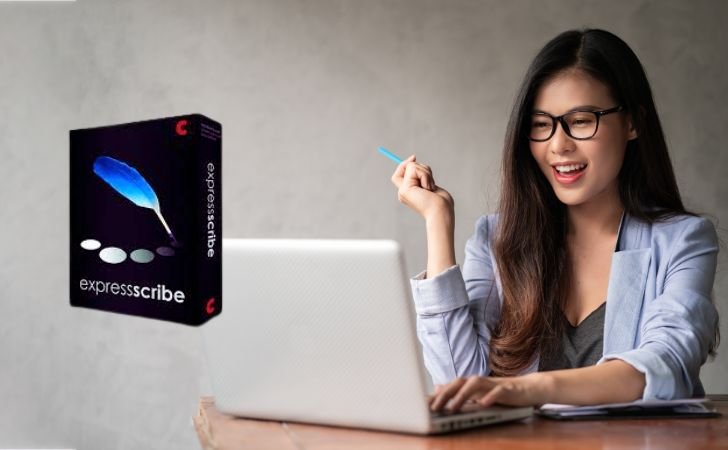AFFILIATE DISCLOSURE
This post may contain affiliate links. An affiliate means Escribr may earn referral fees if you make a purchase through our link without any extra cost to you. It helps to keep this blog afloat. Thanks for your support!
Did you know that by visiting this blog, you are doing good in the world? READ THIS.
Imagine a room buzzing with diverse voices, each contributing valuable insights to a lively discussion.
This is the essence of a focus group – a powerful tool for gathering rich, qualitative data.
But how do you capture this dynamic exchange in written form?
Transcribing a focus group is like preserving a symphony of ideas, where each participant’s voice adds a unique note to the collective melody.
Unlike simpler recordings, focus group transcription presents a special challenge: distilling multiple speakers, overlapping conversations, and nonverbal cues into a coherent document.
In this guide, we’ll explore the art and science of transforming these vibrant discussions into accurate, usable text, ensuring that no valuable perspective is lost in translation.
Let’s expand on these guidelines for transcribing a standard focus group:
1. Capture Every Word and Sound
The cornerstone of focus group transcription is the verbatim approach.
This means recording every single utterance from participants, no matter how seemingly insignificant.
Here’s why this matters:
1. Verbal Content.
- Transcribe all words, including false starts, repetitions, and self-corrections.
- Example: I think… well, no… actually, what I mean is…
- This preserves the speaker’s thought process and hesitations, which can be valuable for analysis.
2. Filler Words and Sounds.
- Include all “ums,” “ahs,” “hmms,” etc.
- Example: Um, I feel that, uh, the product could be, hmm, improved.
- These can indicate uncertainty, thoughtfulness, or hesitation about a topic.
3. Non-verbal Vocalizations.
- Transcribe laughter, sighs, coughs, gasps, etc.
- Example: [Laughter]” or “[Deep sigh]
- These provide emotional context and group dynamics information.
4. Pauses.
- Indicate significant pauses in speech.
- Example: I think… [Long pause] … maybe we should reconsider.
- Pauses can signify reflection, discomfort, or searching for words.
2. Capture Environmental and Contextual Sounds
The auditory environment can provide valuable context and may affect participant responses:
1. Background Noises.
- Transcribe relevant ambient sounds.
- Examples: [Door opens], [Phone rings], [Pen clicking]
- These can indicate interruptions or distractions that might influence the discussion.
2. Group Interactions.
- Note collective responses.
- Example: [Group murmurs in agreement] or [Several participants speaking at once]
- This captures the energy and consensus (or lack thereof) in the room.
3. Maintain Accuracy and Context.
While capturing everything, it’s crucial to maintain clarity and context:
a) Speaker Identification:
- Assign unique identifiers to each speaker (e.g., Participant 1, P1, or use pseudonyms).
- Example:
P1: I believe the new design is effective.
P2: I disagree, because…
b) Unclear Audio:
- Indicate when speech is inaudible or unclear.
- Example: The interface is [inaudible] and could use some work.
c) Nonverbal Actions:
- Describe relevant actions or gestures in square brackets.
- Example: [Participant points to the prototype]
d) Emphasis:
- Indicate emphasized words using italics or underlining.
- Example: I really think we need to focus on this aspect.
3. Maintain Authenticity
In focus group transcription, preserving the speaker’s authentic voice is paramount.
This means resisting the natural inclination to “polish” or correct the language used by participants.
Here’s a deeper look at why this matters and how to approach it:
1. Preserve Colloquialisms and Slang.
- Record exactly how participants speak, including informal language and regional expressions.
- Example: “This app is bussin’ fr fr, no cap!” instead of changing it to “This application is excellent, truly.”
- Rationale: Colloquialisms can provide insights into demographic factors, cultural backgrounds, or emotional responses.
2. Retain Grammatical Errors.
- Transcribe sentences as spoken, even if they contain grammatical mistakes.
- Example: “Me and him was thinking…” instead of correcting to “He and I were thinking…”
- Rationale: Grammar usage can indicate educational background, cultural norms, or even comfort level with the topic.
3. Include Profanity and Sensitive Language.
- Transcribe expletives and potentially offensive language exactly as spoken.
- Example: This product is f***ing amazing! (Do not censor unless specifically instructed to do so)
- Rationale: Strong language can indicate emotional intensity or cultural norms within the group.
4. Preserve False Starts and Self-Correction.
- Include instances where participants begin a thought, stop, and restart.
- Example: I think the product is — No, wait, what I mean is, the marketing of the product is…
- Rationale: These provide insight into thought processes and potential areas of uncertainty or conflict.
5. Maintain Verbal Tics and Habitual Phrases.
- Include repeated phrases or words that might be unique to a speaker.
- Example: “You know what I mean?” at the end of sentences, or frequent use of “like” as a filler.
- Rationale: These can be important for speaker identification and personality analysis.
6. Record Incomplete Thoughts.
- Transcribe unfinished sentences as they occur.
- Example: I was going to say that the interface is… [trails off]
- Rationale: Incomplete thoughts can indicate areas of uncertainty, discomfort, or interruption dynamics in the group.
4. Use Time Stamps
Time stamps are crucial navigational tools in focus group transcription, serving as bridges between the written text and the original audio.
They are especially valuable in situations where audio clarity is compromised or multiple speakers overlap.
Here’s a deeper look at their importance and implementation:
1. Marking Unclear Audio.
- Insert time stamps whenever words or phrases are inaudible or unclear.
- Example: The new product design is [inaudible 00:15:23] and could revolutionize the market.
- This allows reviewers to easily locate and review the specific audio segment for clarification.
2. Indicating Overlapping Speech.
- Use time stamps in conjunction with a [crosstalk] marker when multiple participants speak simultaneously.
- Example: [crosstalk 00:23:45]
P1: I think we should focus on–
P2: But what about the–
P3: Can I just say– - This helps capture the dynamics of the conversation while providing a reference point for further analysis.
3. Frequency of Time Stamps.
- Consider adding regular time stamps (e.g., every 2-5 minutes) throughout the transcript, even when audio is clear.
- Example: [00:10:00] Moderator: Let’s move on to discuss the product’s aesthetic appeal.
- This practice aids in quick navigation and synchronization with the audio, especially in longer sessions.
4. Noting Significant Pauses or Breaks.
- Use time stamps to mark extended silences or deliberate breaks in the discussion.
- Example: [Silence 00:30:15 – 00:30:45] Participants reviewing product samples.
- This provides context for moments of non-verbal activity or reflection.
5. Highlighting Key Moments.
- Employ time stamps to mark pivotal points in the discussion.
- Example: [00:45:23] P4 presents a novel idea that shifts the group’s perspective.
- This allows researchers to quickly locate and review crucial segments of the conversation.
6. Technical Interruptions.
- Note any technical issues or interruptions with time stamps.
- Example: [Audio distortion 01:05:30 – 01:06:15] Discussion continues but is partially obscured.
- This helps explain gaps in the transcript and provides context for potentially missed information.
7. Format Consistency.
- Maintain a consistent format for time stamps throughout the transcript.
- Example: Always use [HH:MM:SS] or (Hours:Minutes:Seconds) format.
- Consistency aids in readability and allows for easier searching within the document.
5. Speaker Attribution
Accurate speaker identification is crucial in focus group transcription, as it preserves the flow of conversation and allows for analysis of individual contributions.
While full naming is often impractical, there are several effective strategies for distinguishing speakers:
1. Basic Identification.
- Use general identifiers like “Moderator” and “Participant.”
- Example:
Moderator: How do you feel about the product’s design?
Participant: I think it’s sleek and modern.
2. Numbered Participants.
- Assign numbers to participants for more precise tracking.
- Example:
P1: I disagree with the color scheme.
P2: Actually, I find it quite appealing. - This method allows analysts to follow individual opinions throughout the session.
3. Descriptive Identifiers.
- Use brief descriptors when relevant and ethically appropriate.
- Example:
Female Participant: The product seems geared towards men.
Male Participant: I hadn’t considered that perspective. - Be cautious with this approach to avoid reinforcing stereotypes or compromising anonymity.
4. Consistent Attribution.
- Maintain the same identifier for each speaker throughout the transcript.
- This might require creating a key or legend at the beginning of the transcript.
- Example: P1 = Female, early 30s, marketing professional
5. Handling Uncertainty.
- When unsure of the speaker, use a placeholder.
- Example: Unidentified Participant: Can we discuss the pricing?
- This preserves the content without risking misattribution.
6. Group Responses.
- Indicate when multiple participants speak simultaneously.
- Example: [Several Participants]: Yes, agreed.
7. Non-verbal Contributions.
- Attribute significant non-verbal cues to specific participants when possible.
- Example: P3: [Nods in agreement]
8. Moderator Distinctions.
- Clearly differentiate the moderator’s speech, as their role is distinct.
- Example: Moderator (prompting): Has anyone had a different experience?
9. Guest Speakers.
- If additional speakers (like product experts) join, give them distinct identifiers.
- Example: Expert 1: Let me explain the technical specifications.
Challenges and Considerations:
- Consistency – Maintaining accurate speaker attribution throughout long sessions can be challenging.
- Privacy – Balancing identification with participant anonymity is crucial.
- Audio Quality – Poor recording quality can make speaker differentiation difficult.
- Large Groups – As group size increases, precise identification becomes more challenging.
6. Protect Privacy
Confidentiality is a cornerstone of ethical research, particularly in focus groups where participants may share personal or sensitive information.
Here’s an expanded look at how to handle confidentiality in transcription:
1. Understanding Confidentiality Levels.
- Full Anonymization – All identifying information is removed or replaced.
- Partial Anonymization – Some identifiers are kept, others removed.
- Coded Identification – Identifiers are replaced with codes.
2. Types of Identifying Information.
- Direct identifiers – Names, addresses, phone numbers.
- Indirect identifiers – Occupation, unique personal experiences, specific locations.
- Contextual identifiers – Combinations of information that could identify someone.
3. Strategies for Maintaining Confidentiality.
a) Placeholder Technique.
- Replace identifiers with descriptive placeholders. Example: I work at [Large Tech Company] as a [Senior Management Position].
b) Coding System.
- Use a consistent code to replace identifiers. Example: “P1_Company” for a participant’s workplace, “P1_Role” for their job.
c) Generalizing Information.
- Broaden specific details to maintain context without identifying individuals. Example: “I live in [Major East Coast City]” instead of the specific city name.
d) Omission.
- In highly sensitive cases, completely remove identifying information.
- Example: I have experience with [omitted for privacy].
4. Client Consultation.
- Discuss confidentiality requirements with the client before transcription.
- Establish clear guidelines on how to handle various types of identifying information.
5. Flexible Anonymization.
- Use a system that allows for easy location and editing of identifiers.
- Example: Surround identifiers with unique symbols: ==John Doe== or <>
6. Contextual Sensitivity.
- Be aware of how combinations of information might identify someone.
- Example: Mentioning a “female CEO of a major soft drink company” might be too specific.
7. Consistency in Anonymization.
- Use the same anonymization method throughout the transcript.
- Create a key or legend explaining the anonymization system used.
8. Handling Accidental Disclosures.
- If a participant accidentally reveals another’s identity, anonymize this in the transcript.
- Example: As Sarah– I mean, as [Participant 2] mentioned earlier…
9. Balancing Confidentiality and Data Integrity.
- Strive to maintain the essence and context of the discussion while protecting privacy.
- Example: Instead of omitting a relevant job title, generalize it: “healthcare professional” instead of “neurosurgeon.”
10. Legal and Ethical Considerations.
- Be aware of legal requirements for data protection in your jurisdiction.
- Consider ethical guidelines provided by professional research associations.
11. Secure Handling of Data.
- Ensure all versions of the transcript (including drafts) are stored securely.
- Limit access to the un-anonymized version of the transcript.
12. Participant Consent.
- Ensure the transcription process aligns with the level of confidentiality promised to participants.
Examples of Anonymization in Practice:
Original: Hi, I’m Jennifer Smith, a marketing director at Apple in Cupertino.
Anonymized: Hi, I’m [Participant 1], a [senior marketing role] at [major tech company] in [Silicon Valley city].
Original: In my experience as the CEO of a Fortune 500 company…
Anonymized: In my experience as [high-level executive] of a [large public company]…
Wrap-Up
Focus groups are dynamic conversations involving multiple participants, often characterized by overlapping dialogue, rapid speech, and participants speaking away from microphones.
This makes transcribing focus group discussions particularly challenging, requiring exceptional listening skills and the ability to tune in to different voices and speech patterns.
To achieve a high level of accuracy, it often takes 2-3 rounds of proofreading.
The goal is to capture every detail—not just the content of what was said, but also how it was expressed.
This provides researchers with a complete and nuanced understanding of the discussion.











